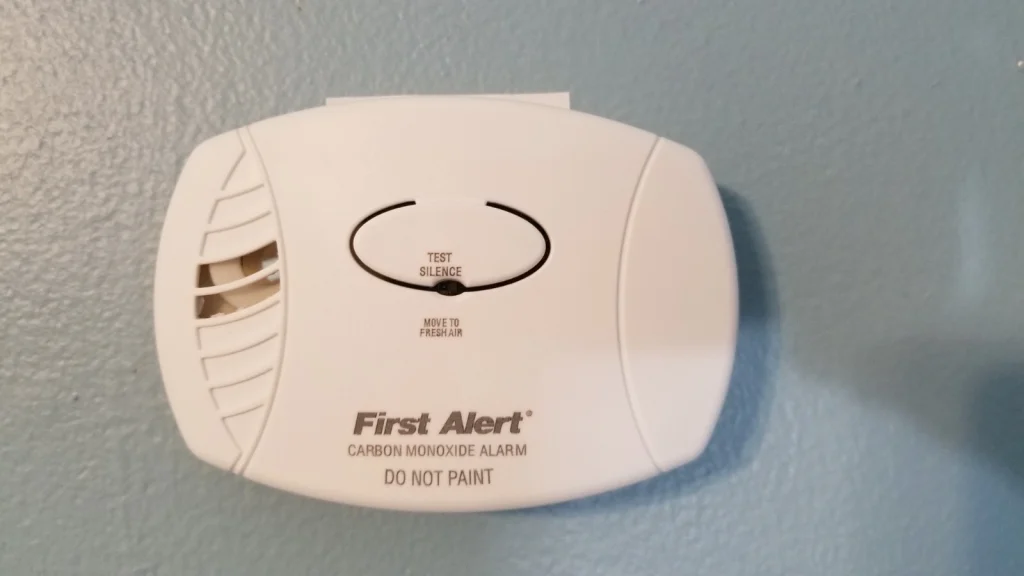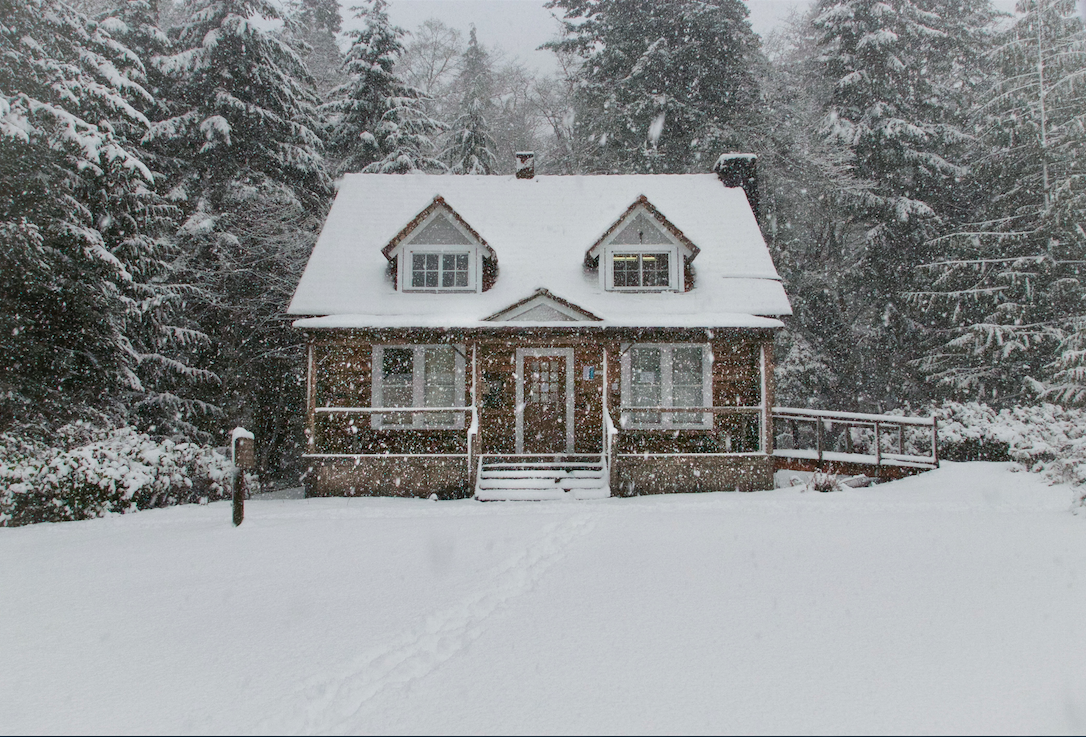During the winter months, one of the most important things is keeping yourself and your family members warm. To keep warm inside your home, you need some sort of heat source. Depending on how your home is heated, that source of heat could be putting carbon monoxide into the air, causing danger to everyone around. In this article, you will learn how to prevent carbon monoxide poisoning in your home this winter.
Carbon Monoxide (CO) is produced when you burn fuel or material, to warm your house or car. It is a tasteless, odorless, colorless, and poisonous gas that when trapped in an enclosed area, can cause serious harm to humans and animals.
Carbon monoxide poisonings spike in the winter, and according to the Centers for Disease Control, kills over 400 people a year, while more than 100,000 visit the emergency room because of it. Carbon monoxide poisoning is also the second most common cause of non-medicinal poisoning deaths.
But don’t worry because there are some precautions we can take every winter to prevent carbon monoxide poisoning. Read below to learn more about carbon monoxide and how to protect your family from this “Silent Killer” while keeping them warm during winter.
But don’t worry because there are some precautions you can take every winter to prevent carbon monoxide poisoning. Keep reading below to learn more about carbon monoxide and how to protect your family from this “Silent Killer” while keeping them warm during the winter months.
Carbon Monoxide – The “Silent Killer”
Carbon Monoxide has coined the name “Silent Killer” because it is odorless, tasteless, and colorless, and it can silently creep up on you without realizing it.
It works to poison your body by preventing your body from getting oxygen. Breathing in more carbon monoxide will deprive the body of more oxygen, causing the following symptoms and eventually death
- Dizziness
- Severe Headaches
- Fatigue
- Drowsiness
- Vomiting
- Fainting
- Stomach pains
- Confusion
- Weakness
- Blurry vision
Carbon monoxide poisoning can also be mistaken for the flu. A way to tell if you have carbon monoxide in your house is if multiple family members are experiencing the same symptoms at the same time. If this happens, move everyone (including pets) to an area outside. Open the windows, doors, garage doors, and turn off or put out anything burning fuel or materials.
The best cure for carbon monoxide poisoning is to get oxygen back into your body. If you or any of your family members experience extreme cases of these symptoms, please call 911 immediately.
Here’s how to identify the causes of carbon monoxide and prevent carbon monoxide poisoning in your home.
Carbon Monoxide in Your Home
Carbon monoxide is in and around your house, and you will live with it daily. But we need to manage our exposure to it by following the tips below and preparing our house each winter.
What Produces Carbon Monoxide?
As mentioned earlier, carbon monoxide comes from burning fuel or material. This includes:
- natural gas
- charcoal
- gasoline
- wood
- propane
- other fuels
The more types of fuel you burn in your home, the more exposure you and your family will have to carbon monoxide.
Sources of Carbon Monoxide in Your Home
If you live in an area where you use any of the above fuel sources in your home, the list below are sources of carbon monoxide.
- Furnaces
- Fireplaces and wood stoves
- Gas stoves
- Grills
- Water heaters
- Gas-powered clothes dryer
- Generators
- Cars in attached garage
- Space heater – fuel-powered
3 Ways to Prevent Carbon Monoxide Poisoning in Your Home in the Winter
You can’t go without certain appliances in your home, and you can’t go without heat in the winter. But you can make sure your house is safe, and your appliances and devices are working properly every winter by following these three ways to prevent carbon monoxide poisoning.
#1 Way to Prevent Carbon Monoxide Poisoning – Carbon Monoxide (CO) Detector

A carbon monoxide alarm or detector detects carbon monoxide in the home (it will not detect smoke or fire). Since carbon monoxide is tasteless, odorless, and colorless, installing a CO alarm is the only way to find out if you have carbon monoxide in your home at a high, concentrated level.
Depending on where you live, there are different requirements for where to put your carbon monoxide (CO) detector in your home. Click here to see if your state requires your home to have a carbon monoxide detector and where to put it in your house.
No matter what your state requires, the National Fire Protection Association (NFPA) recommends that the carbon monoxide alarm be centrally located outside of each separate sleeping area and near the bedrooms.
When using a carbon monoxide detector, closely follow the user’s manual. To make sure it is working properly, test it every week. If the battery is low, change it right away. Most carbon monoxide alarms last five to seven years, so keep track of the age of it and get a new one once it has expired.
There are a variety of carbon monoxide detectors on the market, but always get one that conforms to UL (Underwriters Laboratory) standards.
#2 Way to Prevent Carbon Monoxide Poisoning – Winter Home Maintenance and Prevention
Every year, winter seems to creep up on us quicker than we are ready for it. But before winter starts and you start heating your home, you need to check and prepare your heating sources for the upcoming months.
All heating sources that burn material and fuel need proper ventilation. Do this by securely connecting all ventilation pipes with no blockages.
All venting for gas-burning appliances should rise slightly as they point outdoors. This helps to prevent carbon monoxide from leaking if the ventilation pipe does become disconnected.
Check your pilot lights. If the pilot light is blowing out a lot or it’s yellower than usual, get it serviced. Look for dripping or heavy condensation on windows in rooms with a fuel-burning appliance, and examine all appliances for streaks of soot.
Any sign of carbon monoxide leaks should be looked at by a professional.
Individual home appliance and device preparation
- Furnace – Furnaces can be major sources of carbon monoxide poisoning because they can spread CO throughout the ventilation system of your home. Have your fuel-burning furnace inspected before winter by a qualified HVAC or heating repair technician.
- Fireplaces and Wood Stoves – Fireplaces and wood stoves are common sources of carbon monoxide poisoning because debris can block the chimney flue, not allowing the carbon monoxide to escape. Have your fireplace or wood stove inspected and cleaned by a certified professional chimney sweep before winter every year.
- Gas Stoves – Do not use gas ranges or ovens for heating your house.
- Water Heaters – Check the vent pipe for leaks. If there are any issues, have a qualified technician inspect it.
- Gas-Powered Clothes Dryer – Check connections and clear any snow from around the dryer vent each time it snows.
#3 Way to Prevent Carbon Monoxide Poisoning – Caution With Attached Garages
An attached garage on your home also increases the likelihood of carbon monoxide poisoning. Attached garages are a convenience, but don’t overlook that they are enclosed structures that provide direct access to inside your home.
To prevent high levels of carbon monoxide in your attached garage and from leaking into your house:
- Do not start or leave vehicles running in your garage, including snowblowers, snowmobiles, or gas-powered all-terrain vehicles (ATVs).
- If you need to use a gas-powered generator, place it at least 20 feet away from your garage door, vent, or window.
- If you use a fuel-powered space heater to warm your garage, only run it when you are in the garage with proper airflow outside.
Conclusion
Your home is where you and your family spend most of your time, so don’t let carbon monoxide ruin it. Protect it and your family from carbon monoxide poisoning by taking precautions with the heat sources you use in it.
Also, take time to prevent carbon monoxide poisoning in your home by following the three ways above this winter.
To learn more about how to prevent carbon monoxide poisoning around your children, click below.
Want to make your home energy efficient this year? Read our post – Is My House Energy-Efficient? to learn how.


Interesting post!
I had no idea that carbon monoxide poisoning was that big of a problem in the winter.
I always try to have good airflow in my place because that keeps fresh air continuously coming into all the rooms.
The carbon monoxide detector sounds like a great idea especially if you fireplaces and gas stoves running most of the winter.
I will certainly try to keep my propane wall heater vents clean so that it is safe to use.
You have provided a lot of very helpful information here.
Thanks for all the carbon monoxide prevention tips!
You’re welcome Jesse. Hope you got something useful from it!
Great and informative post. The warning about the carbon monoxide from the attached garage is one of those obvious things that it’s easy for us to miss. Thanks for the public service.
You’re welcome Scott.Yeah I think a lot of people tend to forget that CO can get trapped in an attached garage and leak into their home.
Thank you for this timely post as it finally starts to gets colder out and we are using the heat more. I didn’t know that we are recommended to check it weekly. I need to get on that! We have a CO detector that is built into our smoke detectors. Do you recommend that we also have a separate CO detector?
You’re welcome Ashley. As long as the carbon monoxide detector conforms to UL (Underwriters Laboratory) standards it should be okay if it’s built into the smoke detector.
I grew up in Canada where every house seemed to be equipped with a carbon monoxide detector, since moving to Australia several years ago I have noticed that none of the houses have them – and even worse when I mention the dangers of CO poisoning, oftentimes people have never heard of it!
While Australia doesn’t get nearly as cold as North America in the winter, many people still use gas heaters with very little awareness of the dangers that they can pose.
Thanks for the great write up, I’ll be referring people to this next time I get a quizzical expression when I ask my friends if they have a detector this winter!
You’re welcome. Yes please pass this on to your friends in Australia. They need to be aware that gas heaters in their home can cause CO poisoning.
Hello,
Thanks for this informative site on Carbon Monoxide poisoning. I am from a country where our winter heating methods for housing is sadly way behind other countries. Carbon Monoxide poisoning is not something we even think about, and to be honest I didn’t even know you could get detectors. It is still common here to heat from wood fireplaces, while we do clean the chimney flu each year, I never thought to do it for blockages that allow Carbon Monoxide build up and non escape. This is all new to me and having checked out the pricing, so affordable to bring in and have installed. I think I will be investing in these detectors. A have learnt a lot from this post. Many thanks.
Nadine
You’re welcome. I’m glad you learned something Nadine. If you burn wood to heat your home, it would be a wise decision to get a carbon monoxide detector.
This is such a useful post. We normally turn on our ACs in our home or cars and neglect giving a second thought about what we do with artificial airs.
You’ve vividly shown the harmfulness of these pollutions through citing various symptoms such as dizziness, headache, and fatigue. It is so cool that you have also mentioned the ways to prevent them.
Looking forward to reading more such useful information.
All the best.
Thank you Phomrong. I hope this information is helpful for you and your family.
What a great site. Fresh easy to navigate site, with a cool look. You can keep digging in to site for ages, and still come up with something new. I like the chemical free element to your site too.
I’m glad you enjoyed it Stephen. Hope you found something that is helpful.
Hello, thank you for this informative post. The time is amazing. I’m just looking for how to prevent carbon monoxide poisoning. It has too many products online and difficult to make the decision. Luckily I landed on your site so I find the carbon monoxide alarm for my home. I like you leave the link below so I don’t need to find it on Amazon separately. It makes me save a lot of time and effort. The tips provided are also practical. I will ask my wife to do it.
You’re welcome CT. Hope it helps you in preparing your home for the winter months ahead.